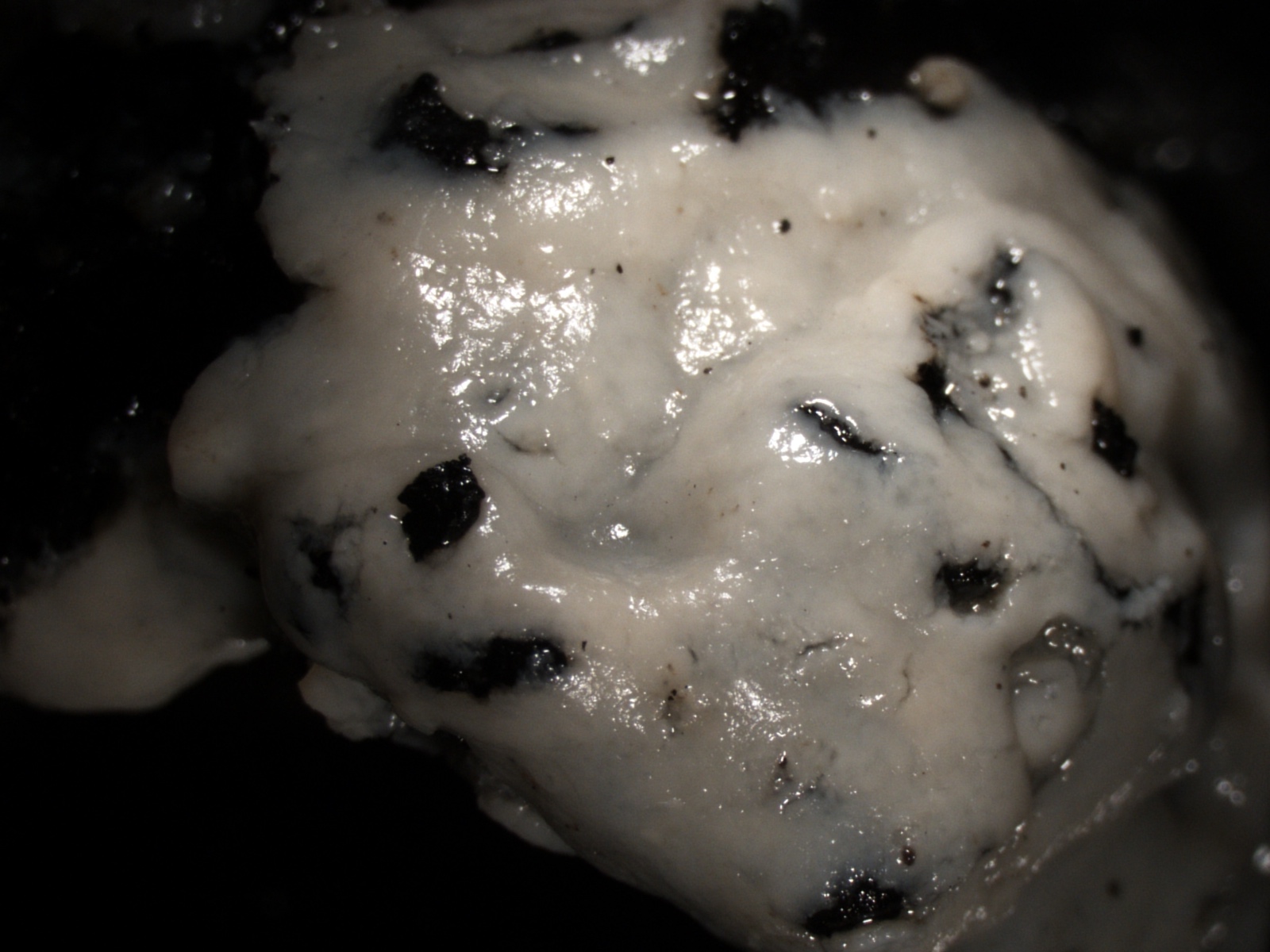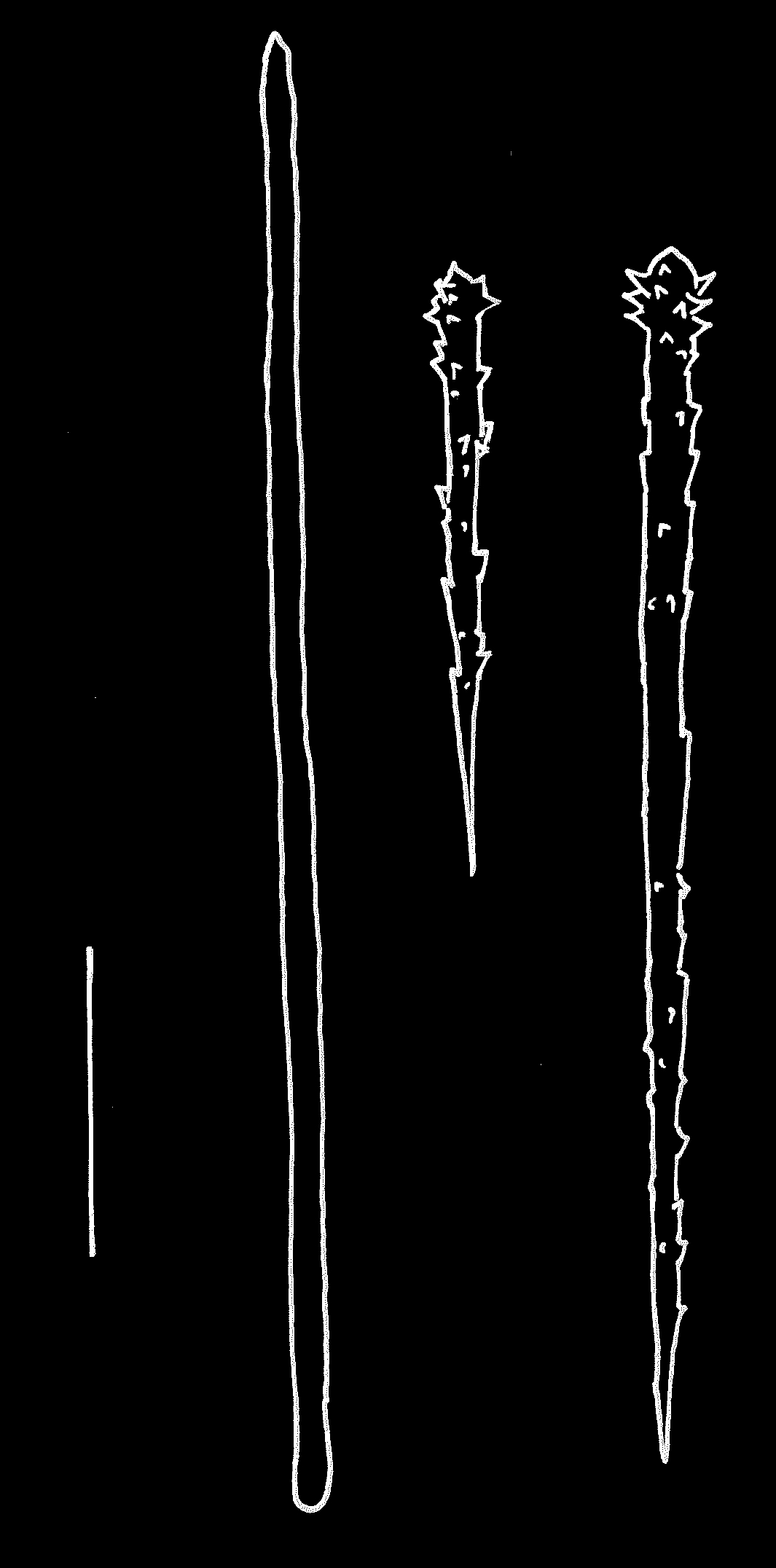| Reference |
| Hymedesmia (Stylopus) methanophila |
| 2015-03-20 |
| Campeche Knolls, Gulf of Mexico (21° 53' 60'' N, 93° 25' 60'' W) |
| 2925m |
| Maxim Rubin Blum, ROV MARUM-Quest 4000 m |
| UPSZTY 167252 |
| Zoological Uppsala Museum, Sweden |
| ethanol 90% |
| Paco Cárdenas |
Morphological description (show/hide)
| Encrusting | | white | | white | | smooth, glistening | | (a) acanthostyles I, usually straight, rarely slightly bent, swollen heads with large spines (up to 3 µm long), upper half has few spines, length: 172–194.8–220 µm, width: 6–7.6–10 µm; (b) acanthostyles II, straight, head can be swollen or not, spines are regularly distributed all along the style, length: 40–90.6–137 µm, width: 3–5–7.5 µm, (c) ectodermal strongyles; one end can rarely be slightly tylote, the other rarely slightly tornote, straight, 150–223.9–272 µm, width in the middle: 3–4.4–5 µm. | | none |
|
| This is the holotype. |
Reference (show/hide)
| Rubin-Blum M., Antony C.P., Borowski C., Sayavedra L., Pape T., Sahling H., Bohrmann G., Kleiner M., Redmond M.C., Valentine D.L. and Dubilier N. (2017) Short-chain alkanes fuel mussel and sponge Cycloclasticus symbionts from deep-sea gas and oil seeps. Nature Microbiology, 2, 17093. |
| Rubin-Blum M., Antony C.P., Sayavedra L., Martínez-Pérez C., Birgel D., Peckmann J., Wu Y.-C., Cardenas P., MacDonald I., Marcon Y., Sahling H., Hentschel U. and Dubilier N. (2019) Fueled by methane: deep-sea sponges from asphalt seeps gain their nutrition from methane-oxidizing symbionts. The ISME Journal. |
|



